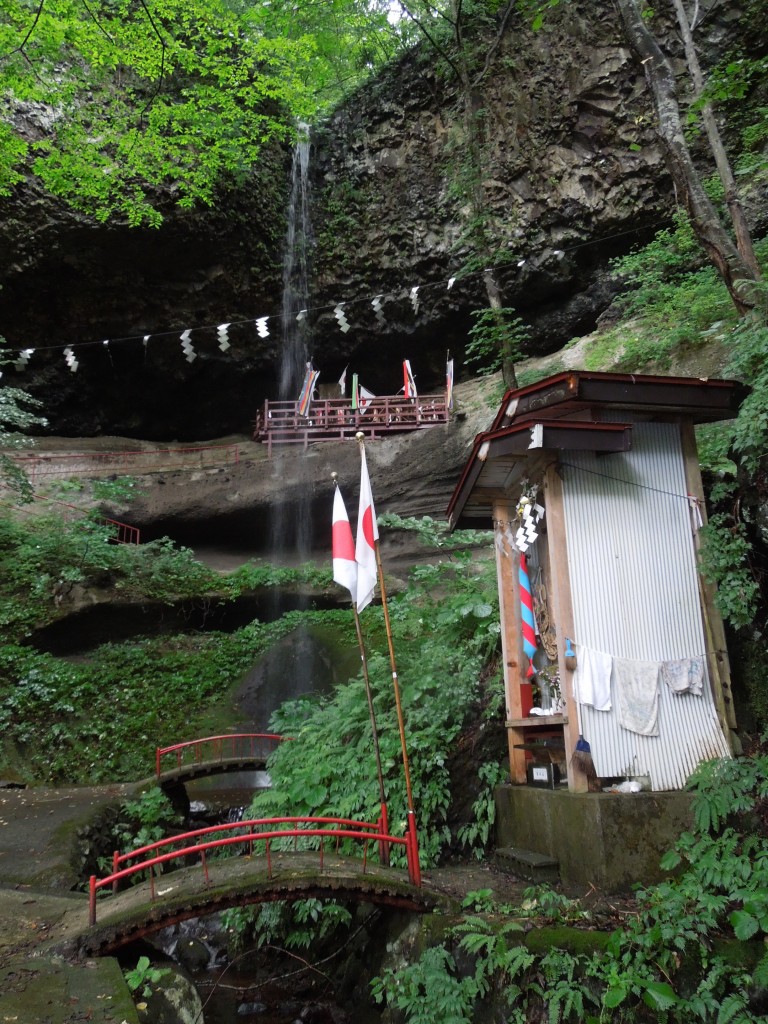
Nioga Falls near Hirosaki
Nioga Falls
Chance discoveries are always the most exciting for being unexpected. One such find on my exploration of the Shirakawa Sanchi World Heritage Site was the Nioga Falls. it lies on the way from Hirosaki City to the mountainous beech woods around Anmon Falls.
There was nothing remarkable about the simple red torii by the side of the roadway, so when I walked inside I expected to find a humdrum little wooden shrine. Imagine my surprise on finding a magnificent waterfall! And my surprise was deepened even more by the peculiar atmosphere of the place, with conspicuous Japanese flags and without the usual Shinto features.
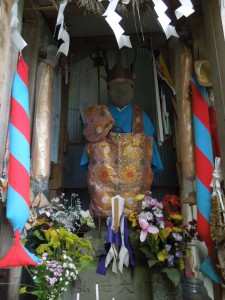
Kukai, aka Kobo Daishi, guardian "deity" of the waterfall
As I walked around, I realised it must be a shugendo base of some kind. The waterfall was clearly set up for misogi, and the only shrine was to Kobo Daishi aka Kukai, the founder of Shingon Buddhism.
But what was with all the flags? Though I tried to find out more at the Shirakami Visitors Center situated not far away, they were only able to tell me about a festival held there in winter when the waterfall serves as a traditional means of fortune-telling. According to the local lore, when the waterfall freezes over the thickness of the ice signifies whether the coming year will produce a good harvest or not.
Bear territory
Another shrine to catch my attention was one called Kumano Jinja. Aomori is an area rich in folklore and belief, with a shrine round every corner. But as with nearly all the shrines I visited, there was no office open and sign of a priest (or anyone else for that matter). Presumably like other rural areas, the local shrines are suffering the consequences of depopulation, meaning that a single priest has to take care of some forty shrines or so.
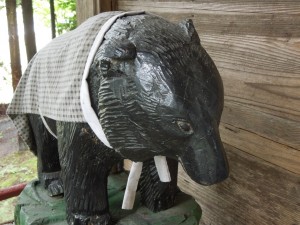
Bear at Kumano Jinja
The name of the Kumano Shrine was written in the same way as those in the Kii Peninsula so I presumed it was a branch shrine. But there was one striking oddity. As well as the usual komainu guardians, the main building was guarded by two little black bears. It was a reminder, if one needed reminding, that this was bear territory. The strength and savagery of the animal was here harnessed in defense of the kami.
Personally I’d rather have a bear as an ally than a foe. The day before I’d come across a real black bear at Black Bear Waterfall, and my natural reaction was to panic, turn and run away…. just what you’re not supposed to do. Fortunately for me, however, the bear panicked, turned and ran away before I did, so I very happily paid my money at Kumano Shrine and gave thanks for whatever divine providence guides such things.
Horse business
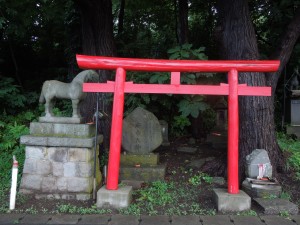
A wayside shrine - but to which kami?
One of the wayside shrines I passed had a strong horse flavour about it, and I later noticed another with a similar horse statue. Someone had been very dutiful in placing a carrot in front of every single stone monument, yet it was unclear from the inscriptions what was special about the horse. Nor was there any indication of what kind of kami it might be serving. Indeed, there was not even a hokora (small shrine) for a kami. It was all very puzzling.
Unfortunately I wasn’t in the area long enough to follow up on the mystery, so it will have to wait for my next visit to this delightful part of the world. Perhaps it has something to do with Oshirasama, mentioned here, for a horse plays a prominent role in the legends about him.
Horses in general were very much associated with this part of the world, and viewed as valuable creatures to be presented to the high and mighty. Perhaps they were seen as not only fit to serve the kami as their bearers, but having some divine status in themselves… but here I have to say, my thoughts are galloping away with themselves….
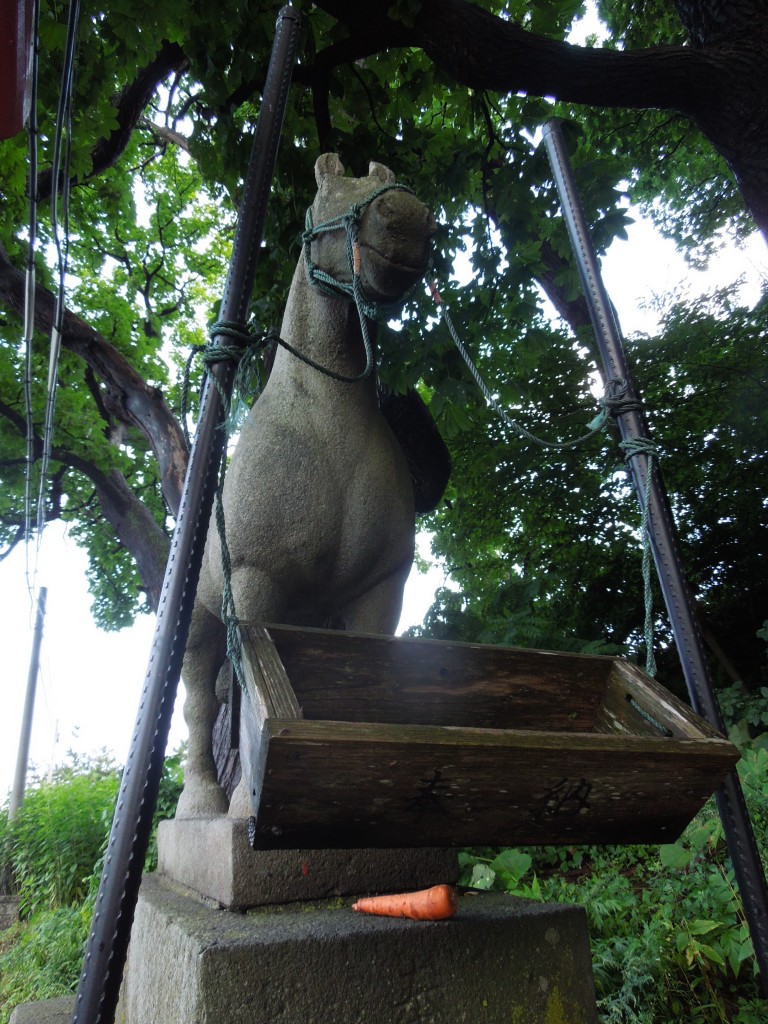

Leave a Reply